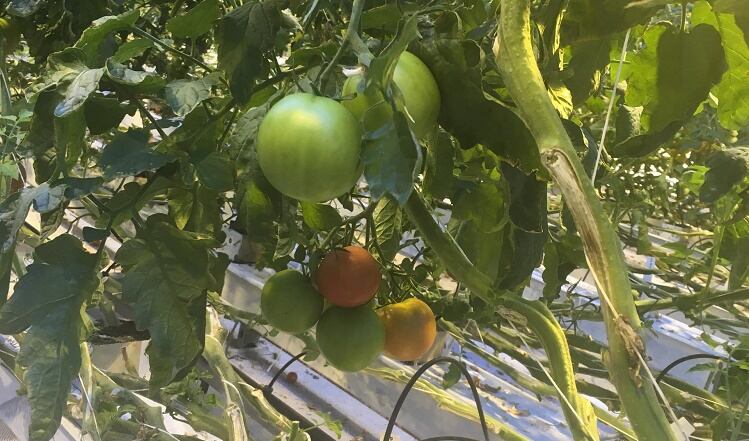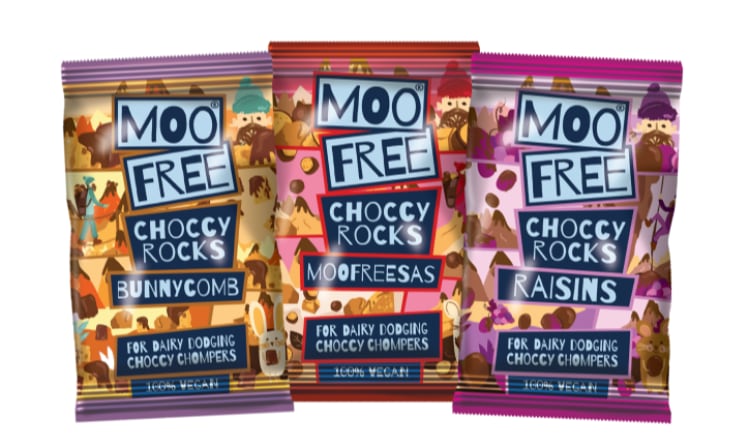There are 14 ingredients that must, by law, be identified as allergens. Few products claim to be free from all 14 however, with most free-from manufacturers focusing on guaranteeing the absence of a smaller number of prevalent allergens and those that are directly relevant to their brand and consumers.
For free-from snack brand Crave, as a minimum that means being gluten-, milk- and lactose-free.
“For us the most prevalent allergens are the key ones. It’s super difficult to cater for all needs, especially with some new, emerging allergens that are coming through,” says Rob Brice, founder of Crave.
“We don’t flag all of the allergens that are absent on pack, as if you wouldn’t expect them to normally be in there then we think it is disingenuous to say we’ve taken them out. We’d always expect people to check the back of the pack,”he explains.
For children, he says milk, eggs and nuts are the most common allergens; celery and mustard are not as prevalent in the UK and sulphites are not as much as a concern for children.
“Sesame is ever increasing and has moved to number nine on the list of top 14, so it’s an ever evolving puzzle.” Brice adds.
Free-from chocolate manufacturer Moo Free agrees that allergens are an ever-changing landscape.
“Whilst our chocolate is dairy-, gluten-, lactose- and soya-free, there are also new allergens appearing that we should be aware of which, although quite common, such as coconut, aren’t officially recognised yet, so it’s important to be sensitive to these. It is the case that those who are lactose intolerant usually suffer with other allergies as well,” says ceo Andrea Jessop.
Allergen management approaches and advancements
The way in which factories manage the presence (or absence) of these allergens varies from one manufacturer to the next.
“There are manufacturers who have strictly separate, specialised production sites and dedicated supply chains. In addition some of them prove this internally by using LFD or ELISA bioanalytical tests on site. Others follow a strict cleaning and control strategy in case the same equipment is used to manufacture allergen-free and non-allergen-free product lines,” says Cristina Romero, product manager for food allergens at Eurofins Immunolab GmbH.
She says economics play an important role in determining what a company’s allergen management system will look like - it is generally only large manufacturers who have the lab facilities to conduct their own ELISA testing. Therefore, smaller manufacturers might perform routine LFD tests themselves and then periodically send samples to an external lab to check for traces of allergens.
Outlining its approach to allergen management, Crave says it only uses suppliers and factories who can demonstrate true free-from production.
“We review all production facilities and risk assessments and all of our products are positively released before they leave and hit the shelves. A free-from claim is absolute and for some it’s the difference between life and death and so we take it very seriously,” says Brice.
He continues: “We have a working relationship with a great lab so we can ensure we are using the most accurate testing methods and detection. Simple things such as rapid allergen detection kits have been great for positive releasing of lines, cleaning and production and the technology is getting better and better.”
New rapid results reader
One example of how allergen testing technology is advancing is the launch of Eurofins’ new RapidScan ST5-W lateral flow reader, which quantifies LFD test results.
An LFD either gives a positive or negative result in the same way as a lateral flow covid test. The limitation with this, according to Eurofins, is that on receiving a positive result, line managers do not know how serious the cross-contamination is, which will in turn determine what action they need to take.
The reader is particularly useful in the case of gluten - the only allergen for which regulated limits exist. With the reader, factory managers can instantly determine whether their products fall within the limits for gluten-free foods (<20ppm) set out in the Codex Standard.
Allergen removal for consumers with intolerances was where the free-from food movement all began and remains an important focus for many manufacturers.
Tasneem Alonzo, joint managing director of EHL Ingredient’s Lähde brand, says: “Non-allergen food is a huge area of growth for us at the moment; demand for gluten-free, dairy-free, nut-free and sulphite-free food ingredients has increased in recent years and it is a market we expect to develop even further,” he says.
EHL offers over 50 individual gluten-free herbs and spices and earlier this year launched five new African-inspired spice blends under its Lähde brand. These included two seasonings from Ethiopia - Mimita and Mekelesha, Moroccan La Kama, Tabil from Tunisia and a Nigerian jollof rice seasoning. The dry mixes are available in vegan, non-allergen and organic formats and EHL says it can perform tests to certify products as allergen-free.
Similarly, Philip Linardos, co-founder and CEO of ShelfNow, a new marketplace linking buyers and producers in the indie sector, notes that: “Gluten, dairy and soya remain popular allergens to remove during the NPD process as lactose intolerance rates and conditions like coeliac disease continue to rise.”
Branching out beyond allergen removal
However, as the free-from market matures, its remit is broadening beyond an allergen-intolerant niche.
EHL’s Alonzo says: “The free-from market has grown exponentially over the last few years and foods without dairy, gluten or animal products are becoming much more mainstream and readily available within retail. Consumers of all ages are becoming increasingly experimental with their food choices, with a surge in those following a vegan, vegetarian or flexitarian diet, and those cutting out certain food groups,” he says.
And these more ‘mainstream’ consumers have their own agendas and reasons for choosing free-from options, as Kate Kehoe, marketing executive at FMCG Gurus, explains:
“In the last few years, free-from products have expanded beyond being just being for those with food-related health conditions, such as coeliac disease or lactose intolerance, and are now popular with the health-conscious and sustainable consumer,” she says, adding that both the pandemic and environmental concerns have catalysed this shift.
This new audience is not exclusively interested in allergen-free products, but in the absence of other ingredients that are negatively associated with health and environmental concerns.
In particular, FMCG Gurus says consumers are avoiding and moderating their intake of products containing additives, GMOs, sugar and meat. Essentially, free-from is becoming a catch-all term for the exclusion of any ingredients that don’t sit well with consumers.
Mintel also flags up this trend, reporting that vegan/no animal ingredients claims lead ahead of allergen-focused labels as NPD and on-pack communication respond to the buzz around plant-based food.
Dairy-free to outperform gluten-free
It makes sense that the dairy-free segment of the free-from market stands to benefit most from the consumer’s focus on health and the environment.
Indeed, according to Mintel, dairy substitutes have enjoyed rapid sales growth in recent years, with NPD from both new entrants and established players updating and expanding their ranges. Plant milk attracted high profile launches in 2021, with Alpro and Nestlé vying on closely matching dairy milk with their respective This Is Not M*lk and Wunda brands.
Several leading cheese brands also entered the dairy-free space in late 2020 and 2021, which should add visibility to the segment, according to Mintel. Bel UK launched vegan variants of its Babybel and Boursin brands as well as a new vegan brand Nurishh, while Mondelēz-owned Philadelphia launched its Philadelphia Plant Based cream cheese for Veganuary 2022.
Mintel predicts that environmental concerns will remain a key driver fuelling growth for dairy-free once income pressures ease. However, as the gluten- and wheat-free segment has less scope to benefit from environmental concerns, Mintel expects this segment to continue to lose share in the market.
In 2021, Mintel valued the UK free-from market at £1,152m, up 4% on 2020. Dairy- and lactose-free products accounted for £691m and gluten- and wheat-free for £450m of sales.
The market analyst reports that a quarter of people in the UK say someone in their household avoids dairy, with 12% citing allergies/intolerances as the reason, and healthy lifestyle prompting 14% to be dairy free.
ShelfNow also sees the dairy-free and refined-sugar-free movements gaining ground.
Philip Linardos, says: “Over the coming years, we predict that the dairy-free market will continue to grow as a wave of NPD hits the market and an increasing number of consumers opt for dairy-free products over traditional dairy.”
He adds: “We also see the refined-sugar trend gaining traction in the coming months. More and more consumers are making more mindful choices and are looking for ways to cut down on high fat and high sugar foods.”
Chestnuts & coconuts
From an ingredient perspective, the growth of dairy-free is translating to rising demand for coconut products, reports ingredient supplier Brusco.
“There is constant growth in coconut milk and cream to be used in ready meals, curry sauces and desserts. Not only does it offer a great flavour and texture but it helps to remove dairy from recipes, says Steph Skellern, group commercial manager at Brusco.
As well as the obvious dairy replacers, coconut ingredients also have other free-from applications.
Coconut aminos, for example, are a fermented coconut liquid seasoning that can replace soy sauce by delivering the soy flavour without the allergen, says Brusco.
Another ingredient that is growing in popularity in the free-from category is chestnuts, according to Brusco.
“The main question we get asked is: are chestnuts a nut? The answer is no - they are a fruit. Their sweet flavour, fibre content and allergen-free status means they are a great addition to any vegan or nut-free recipe,” says Skellern.
She says that chestnut puree is becoming popular as a dairy alternative in desserts such as vegan cheesecakes and roulades, whilst cooked chestnuts are becoming more widely used year-round as vegan inclusions in pies, pastries and ready meals and as a healthy snack.
The beginning of the end?
The food industry is becoming increasingly adept at developing free-from foods that appeal to not just the minority, but the masses too. Could this be the beginning of the end of the free-from aisle?
“We think the free-from market will continue to grow, but we will see it become more mainstream,” predicts Crave’s Brice. “Products should be as good as mainstream alternatives and so it opens up opportunities for retailers to merchandise free-from foods in the main fixture.”
He says the test of this will be customer trust and feeling comfortable with shopping a normal fixture.
“Some customers with allergies will not shop in certain areas of the supermarket for fear of coming into contact with potential allergens, so it’s all about how it is evolved.”




